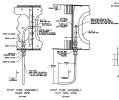SkippyDiesel
Member
- Joined
- Nov 24, 2024
- Messages
- 77
You sound like a priest - ignore what doesn't suit your perception of reality, repeat the same statements ad nauseam, in the hope someone might accept your faith.
"Collective wisdom...." . as you are the main respondent, this smacks of delusions of grandeur .
"WE can't tell you any more than that" - What's with the Royal We ?? - This sort of outmoded language is used by the British Royal Family - are you a member or just aspiring to join their inbred tribe??
You seem to wish to belittle me in your repetition - "....yet you continue to argue and swap out more ADAHRS units." DYNON IS RESPONSIBLE FOR SUPPLYING MULTIPLE ADAHRS MODULES #53- my contribution has simple been to relate symptoms/faults.
"Most likely within the SV," - check out post #46
I think you may have assisted ?? me a to the limit of your understanding and your comprehension of writen English. Should you suddenly have something constructive to impart, I will respond appropriately, otherwise this is my last comment to you .
.
"Collective wisdom...." . as you are the main respondent, this smacks of delusions of grandeur .
"WE can't tell you any more than that" - What's with the Royal We ?? - This sort of outmoded language is used by the British Royal Family - are you a member or just aspiring to join their inbred tribe??
You seem to wish to belittle me in your repetition - "....yet you continue to argue and swap out more ADAHRS units." DYNON IS RESPONSIBLE FOR SUPPLYING MULTIPLE ADAHRS MODULES #53- my contribution has simple been to relate symptoms/faults.
"Most likely within the SV," - check out post #46
I think you may have assisted ?? me a to the limit of your understanding and your comprehension of writen English. Should you suddenly have something constructive to impart, I will respond appropriately, otherwise this is my last comment to you
Last edited:

